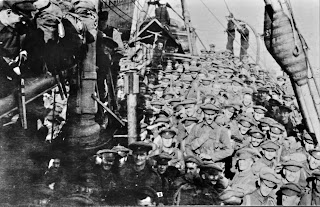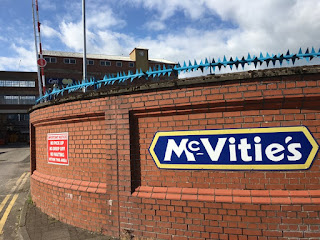Gallipoli
On this day 105 years ago, soldiers from the 1st Battalion, The Border Regiment were amongst the first to disembark on X beach on the Dardanelles Strait. With service personnel from Australia, New Zealand, France, India, and others from the British Army the ill-fated allied attack on Gallipoli had begun.
I knew very little about this campaign until I started working at the Museum. Within the Castle site, one of the buildings is named 'Gallipoli' and I remember seeing the Mel Gibson film many years ago and assumed that the allied forces were predominantly ANZAC. I was introduced to the publication Glory is No Compensation about the Border Regiment's involvement and soon got talking to our very knowledgeable volunteer John, who had also visited the peninsular. I was keen to find out more about Gallipoli and with the centenary of the campaign looming closer, work out how could the Museum commemorate it.
Luckily, we have a small but great selection of photos of this campaign, including the one above of the 1st Battalion lads on minesweeper no 6 on their way to X beach on 25 April 1915. It is sunny and they are crammed into the boat in their khaki serge uniforms minus their cap badge which, sparkling in the sunlight, would have acted as a target for the enemy. We also hold some archival material too which would make a great start to an exhibition, which would be one of the first temporary displays to be held in the new Museum.
I was also keen to work with young people on this project and recruited four students from local Secondary Schools to research and learn about the campaign. I also signed the Museum up to a national project with the Gallipoli Association, linking in with other commemorative activity around both the UK and the world. The young people rose to the challenge, learning how to undertake research, planning the themes for the exhibition, organising the layout and the exhibition panels. The end result was fantastic and, as with all exhibitions, we held an official opening inviting the Mayor as well as the young people and their families.
Those young people have all now graduated from university but they were the first teenagers to form the Museum's young peoples' group which is still running today. The Gallipoli exhibition proved that the relocated Museum could work with groups to produce a good quality display. The whole project was a great success. So every year on the 25th April, I think fondly of the Gallipoli project which has enabled us to develop our Museum skills working with a variety of different groups over the last few years. And enabled those young people to develop skills which they have taken with them onto the next stage of their lives. A success all round.
I knew very little about this campaign until I started working at the Museum. Within the Castle site, one of the buildings is named 'Gallipoli' and I remember seeing the Mel Gibson film many years ago and assumed that the allied forces were predominantly ANZAC. I was introduced to the publication Glory is No Compensation about the Border Regiment's involvement and soon got talking to our very knowledgeable volunteer John, who had also visited the peninsular. I was keen to find out more about Gallipoli and with the centenary of the campaign looming closer, work out how could the Museum commemorate it.
Luckily, we have a small but great selection of photos of this campaign, including the one above of the 1st Battalion lads on minesweeper no 6 on their way to X beach on 25 April 1915. It is sunny and they are crammed into the boat in their khaki serge uniforms minus their cap badge which, sparkling in the sunlight, would have acted as a target for the enemy. We also hold some archival material too which would make a great start to an exhibition, which would be one of the first temporary displays to be held in the new Museum.
I was also keen to work with young people on this project and recruited four students from local Secondary Schools to research and learn about the campaign. I also signed the Museum up to a national project with the Gallipoli Association, linking in with other commemorative activity around both the UK and the world. The young people rose to the challenge, learning how to undertake research, planning the themes for the exhibition, organising the layout and the exhibition panels. The end result was fantastic and, as with all exhibitions, we held an official opening inviting the Mayor as well as the young people and their families.
Those young people have all now graduated from university but they were the first teenagers to form the Museum's young peoples' group which is still running today. The Gallipoli exhibition proved that the relocated Museum could work with groups to produce a good quality display. The whole project was a great success. So every year on the 25th April, I think fondly of the Gallipoli project which has enabled us to develop our Museum skills working with a variety of different groups over the last few years. And enabled those young people to develop skills which they have taken with them onto the next stage of their lives. A success all round.




Comments
Post a Comment